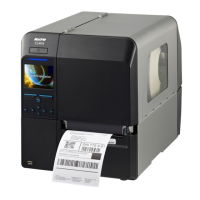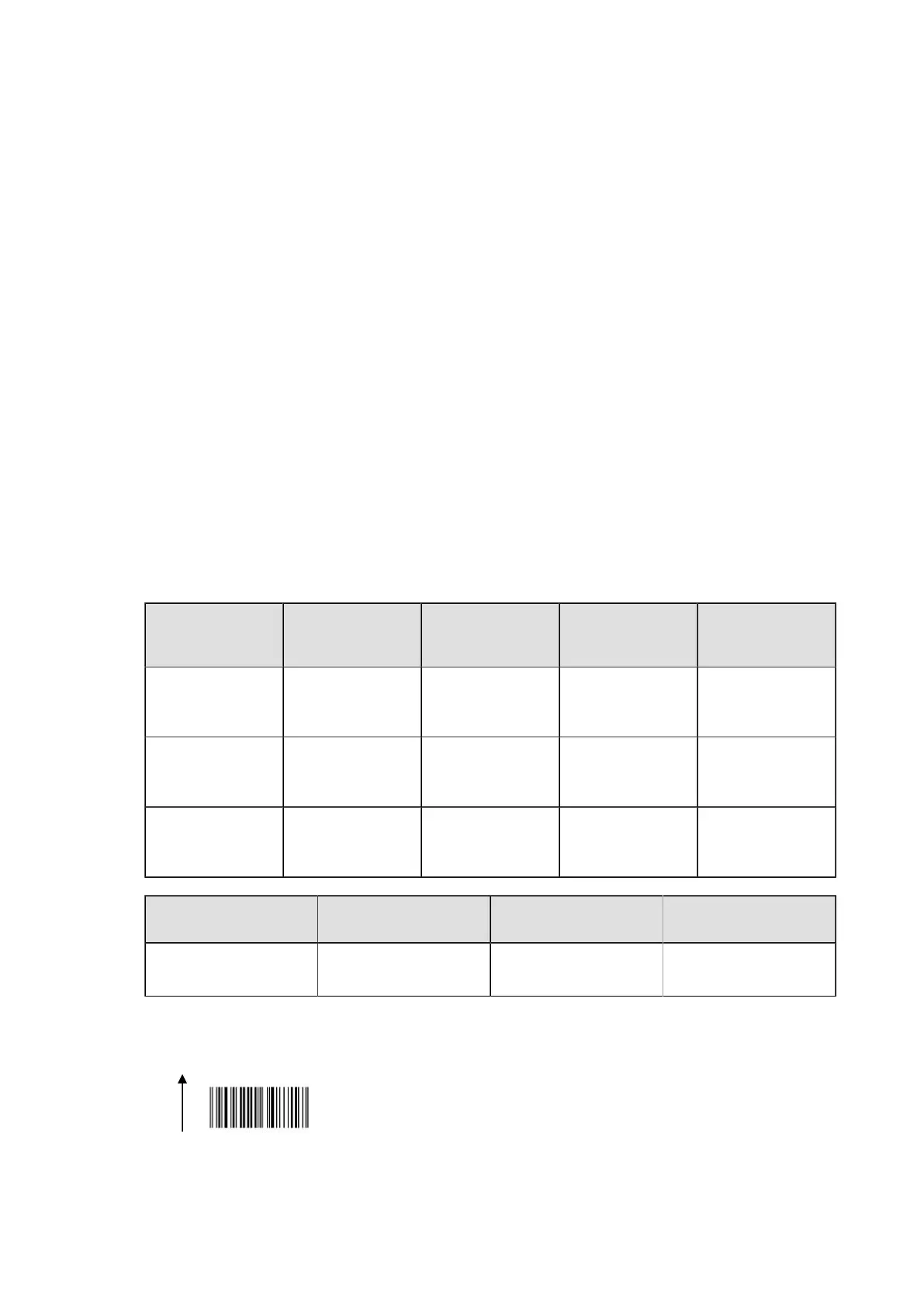176
(3) Intercharacter gap
Intercharacter gap is the space between two adjacent barcode characters in a discrete barcode.
To specify and enable intercharacter gap, insert Character Pitch <P> right before barcode
specification such as <B>, <D> and <BD> or Print of Barcode with Registered Ratio <BW>. If not,
initial value (2 dots) will be set.
Intercharacter gap is designable for the following barcodes.
• CODABAR (NW-7)
• CODE39
• Industrial 2of5
• Matrix 2of5
Intercharacter gap is the multiplier of values specified with Character Pitch <P> and narrow bar
width.
e.g.)
When Character Pitch <P> is 3 and narrow bar width is 2 dots:
Intercharacter gap = 3 x 2 = 6 (dots)
(4) Designation of human readable information (HRI) and guard bar
For UPC-A and JAN/EAN 8 and 13 digits barcode, availability of human-readable information
(hereinafter HRI) and guard bar can be specified.
Barcode
specification
parameter
Barcode
specification
<B> <D> <BD>
3 JAN/EAN13 HRI: Nil
Guard bar: Nil
HRI: Nil
Guard bar:
Available
HRI: Available
Guard bar:
Available
4 JAN/EAN8 HRI: Nil
Guard bar: Nil
HRI: Nil
Guard bar:
Available
HRI: Available
Guard bar:
Available
H UPC-A HRI: Nil
Guard bar: Nil
HRI: Nil
Guard bar:
Available
HRI: Available
Guard bar:
Available
Barcode specification
parameter
Barcode specification <BM> <BL>
H UPC-A HRI: Available
Guard bar: Available
HRI: Nil
Guard bar: Available
(1) Specification of <B> (No HRI, No guard bar)
If specifying <B>, following barcode will be printed.
Label feed
direction

